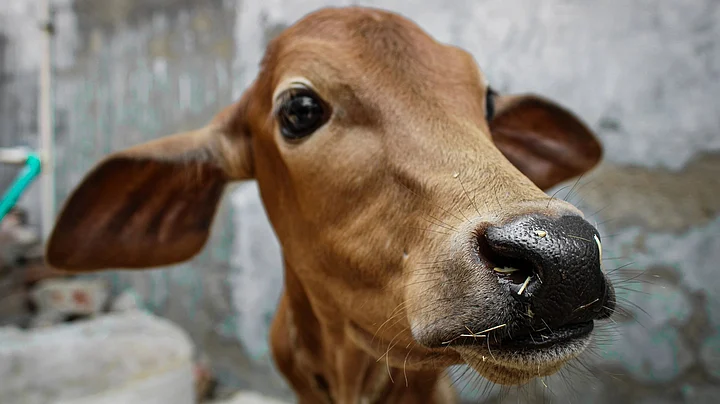Over 1,200 cows have died from an outbreak of contagious lumpy skin disease in Rajasthan, along with 25,000 cattle being infected with the disease in three months, according to animal husbandry officials.
The outbreak of lumpy skin disease has also affected over 17 districts in Gujarat, and killed at least 254 cattle in the past two weeks alone.
Animal husbandry department officials said that the infection has spread at an unrelenting pace in three months.
With the ongoing outbreak of monkeypox, should we be similarly concerned about lumpy skin disease? What causes lumpy skin disease? How does it spread? And who is at risk?
We answer all your questions in this FAQ.
What is lumpy skin disease?
Lumpy skin disease is a contagious viral disease that affects cattle. It's caused by the Neethling virus from the Poxviridae family of viruses. The virus is transmitted by insects that feed on blood, including mosquitoes, flies, and ticks.
Once infected, cows display enlarged lymph nodes and nodules on and under their skin. Infected cattle also display runny noses, fever, swelling of the legs, and can suffer permanent damage to their skin.
This affects their economic value and causes tremendous losses to the owners of these cattle.
How does lumpy skin disease spread?
Lumpy skin disease is spread by insects that feed on blood. This includes mosquitoes, ticks, and several types of fly including the tse-tse fly, the horsefly and other flies that transmit blood-feeding parasites.
Lumpy skin disease spreads faster and more efficiently in high heat and humidity. Animal Husbandry department officials have said that the present outbreak of lumpy skin disease originated in Africa and spread to India through Pakistan.
Pakistan reported an outbreak of lumpy skin disease in Karachi in February 2022.
Can humans catch lumpy skin disease?
Studies have stated that as many as 10,000 zoonotic viruses are likely to spread from animals to humans in the present century because of increased temperatures from climate change. However, lumpy skin disease is not one of them, and it poses no threat to human health as of now.
However, the economic losses caused by lumpy skin disease can be quite severe, with infected cows suffering severe damage to their skin and health, and even dying from the disease.
Damaged skin causes the value of the cow's hide to drop considerably.
Is there a way to prevent or treat lumpy skin disease?
Vaccinations can help prevent lumpy skin disease. Another way to limit the spread of lumpy skin disease is by isolating infected cattle. The Gujarat state Animal Husbandry department has stated that over 5.74 lakh animals in the state have been vaccinated against lumpy skin disease.
(At The Quint, we question everything. Play an active role in shaping our journalism by becoming a member today.)
